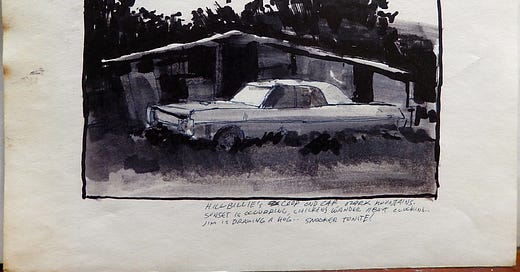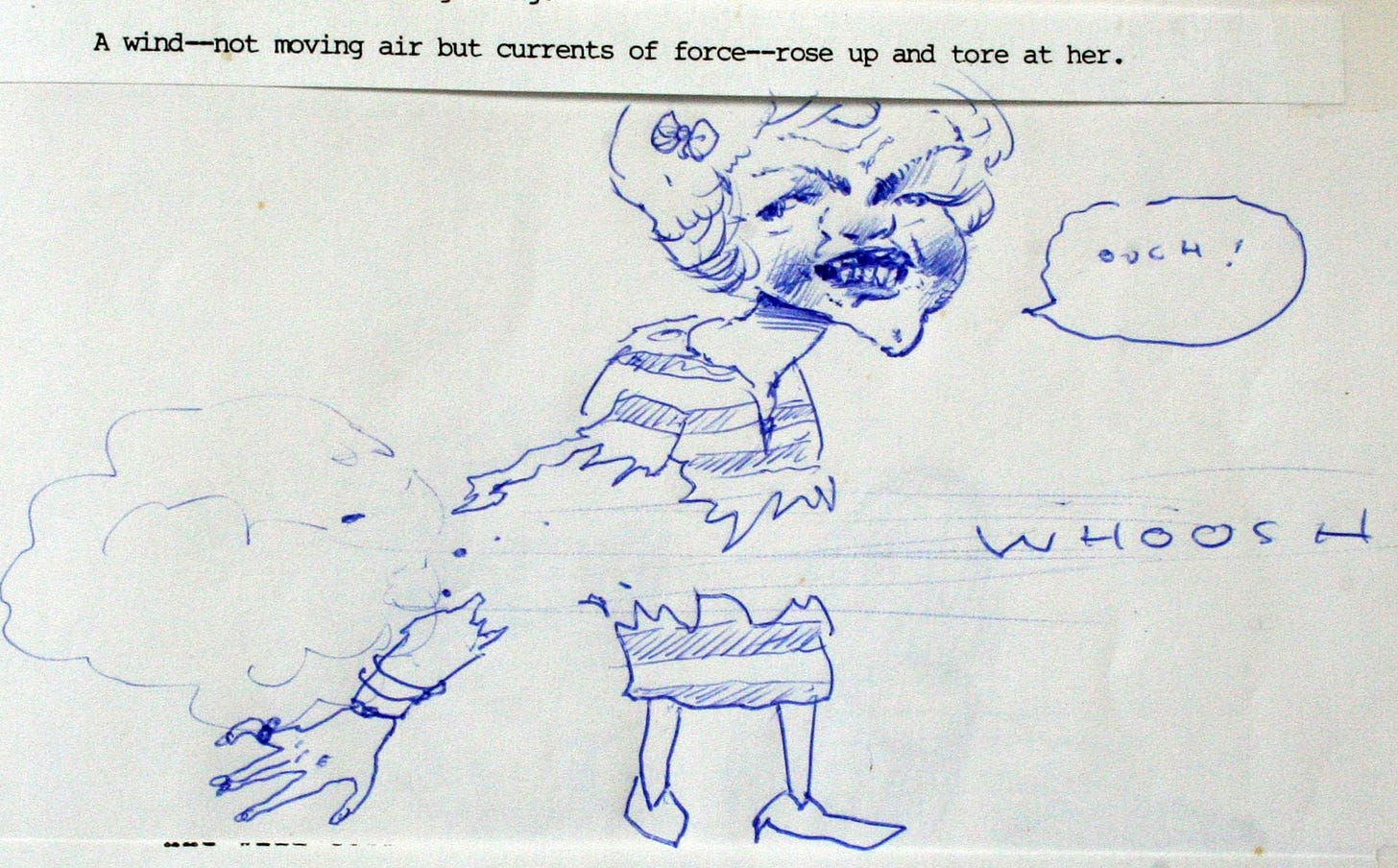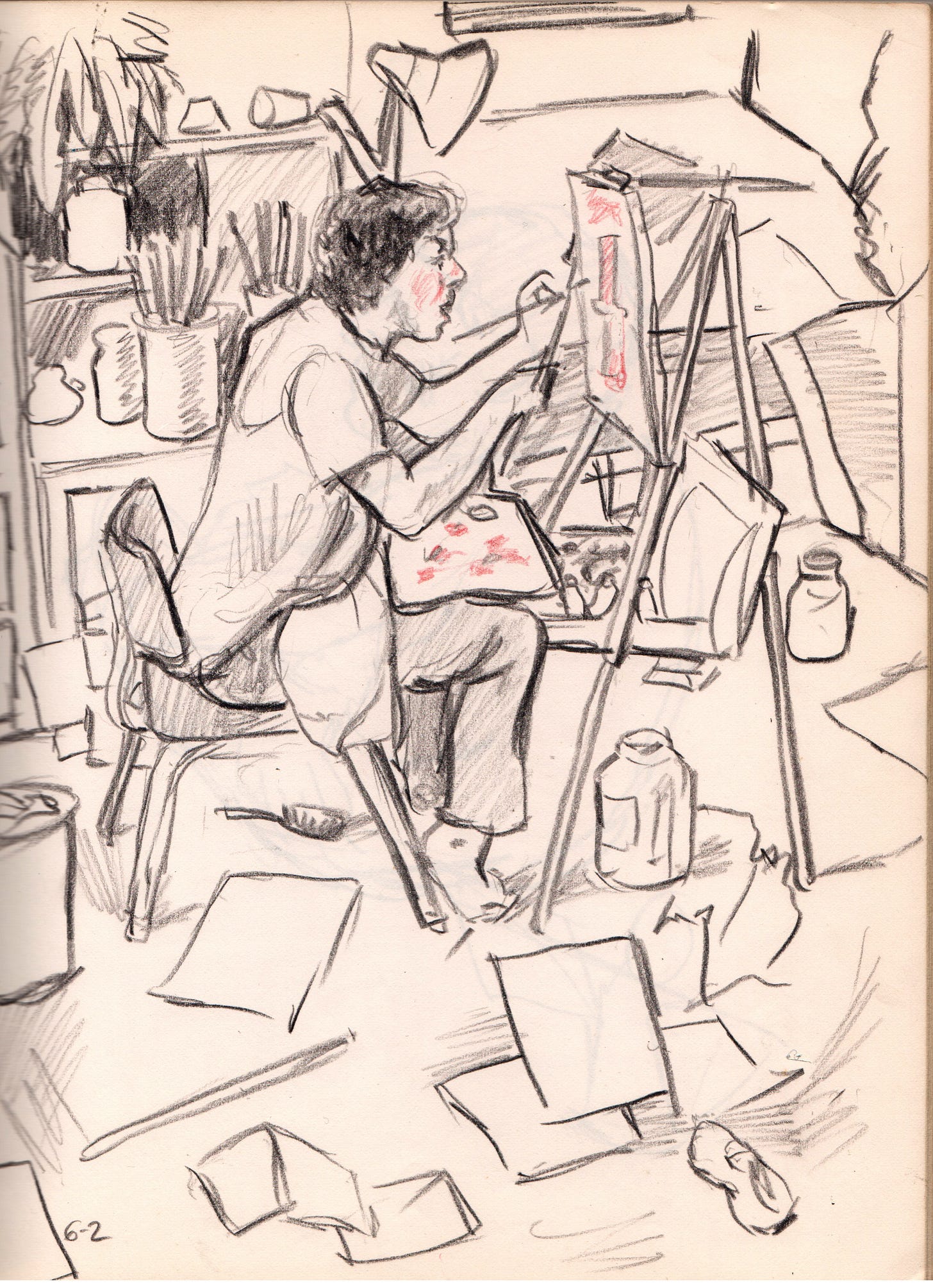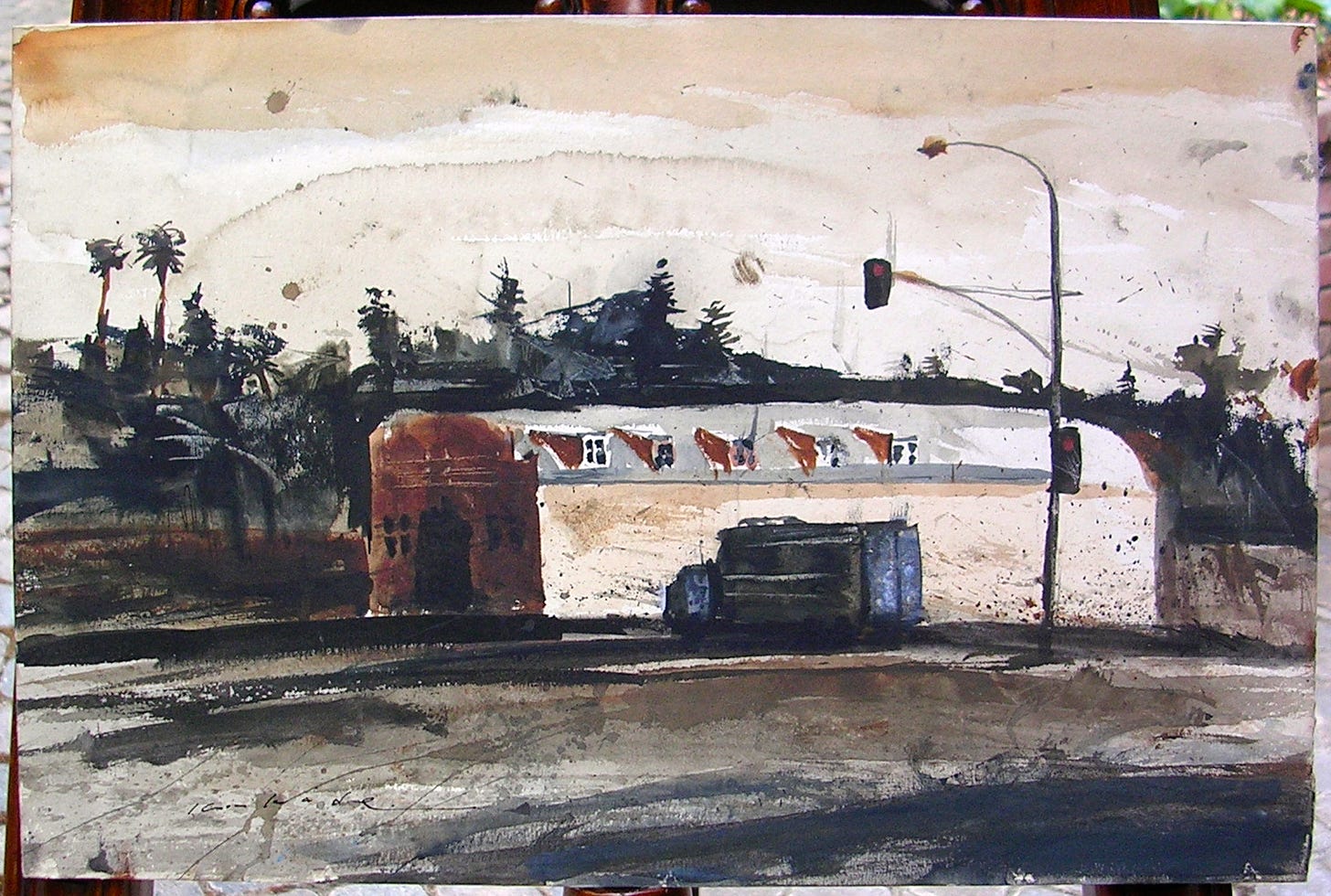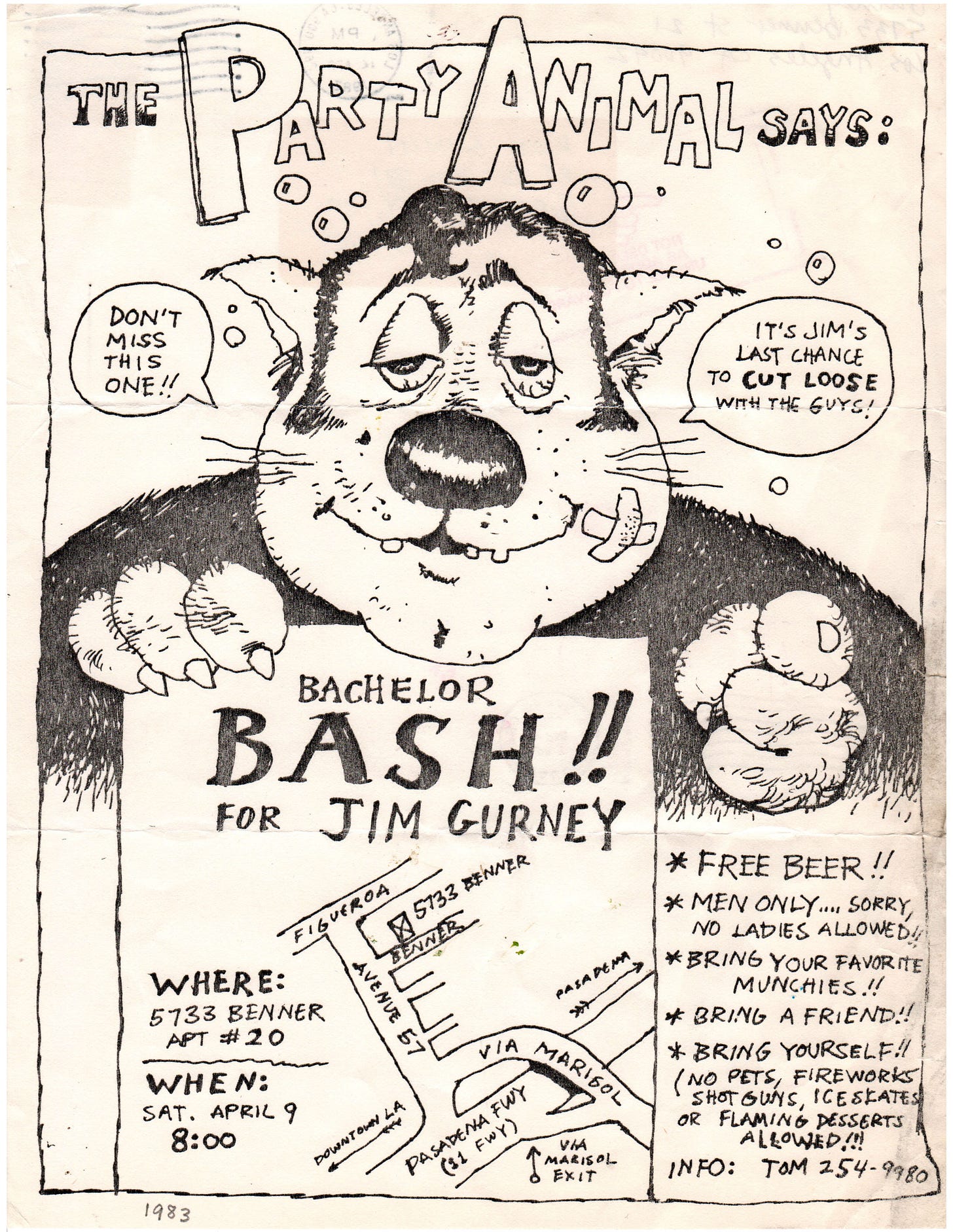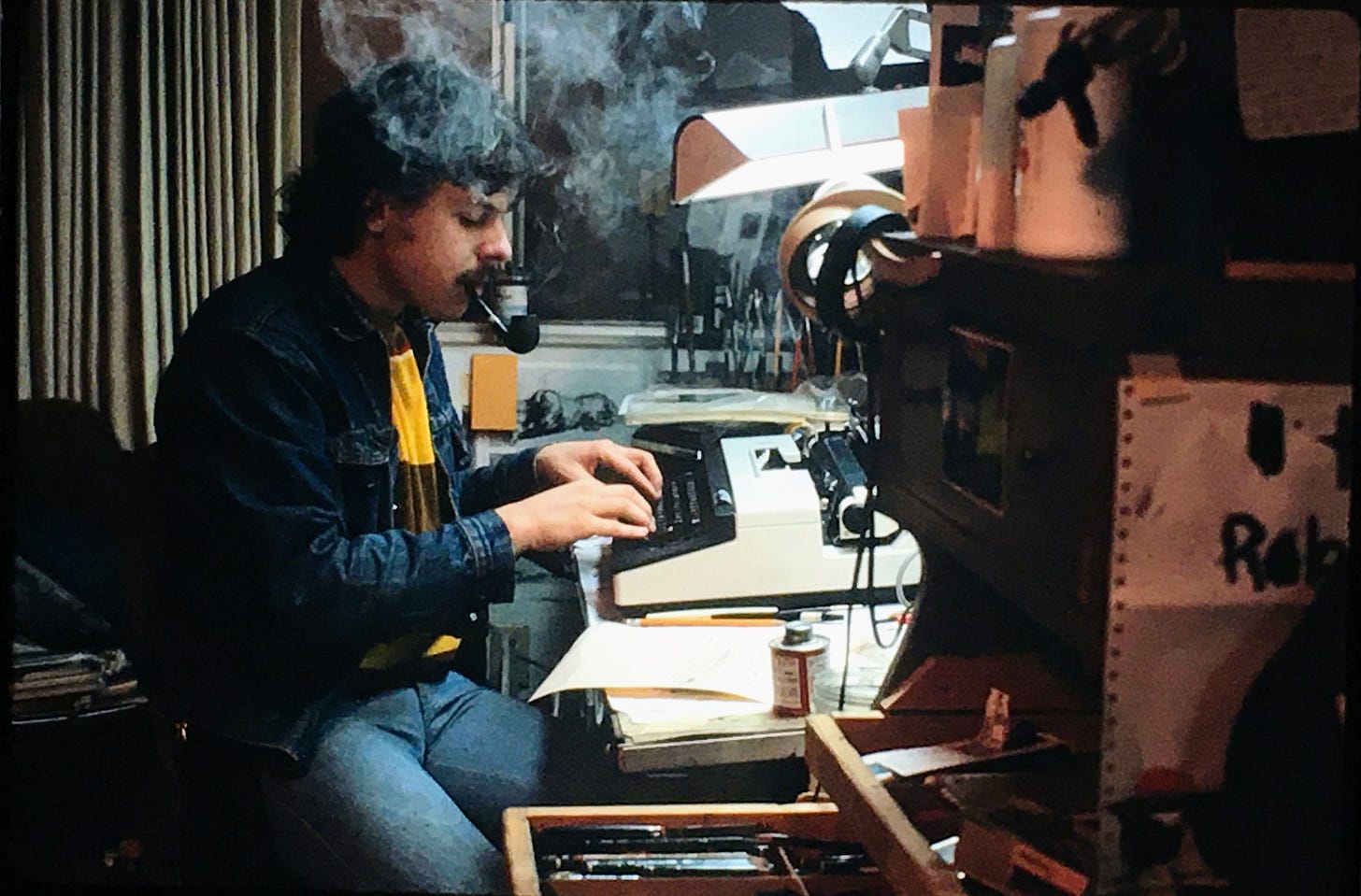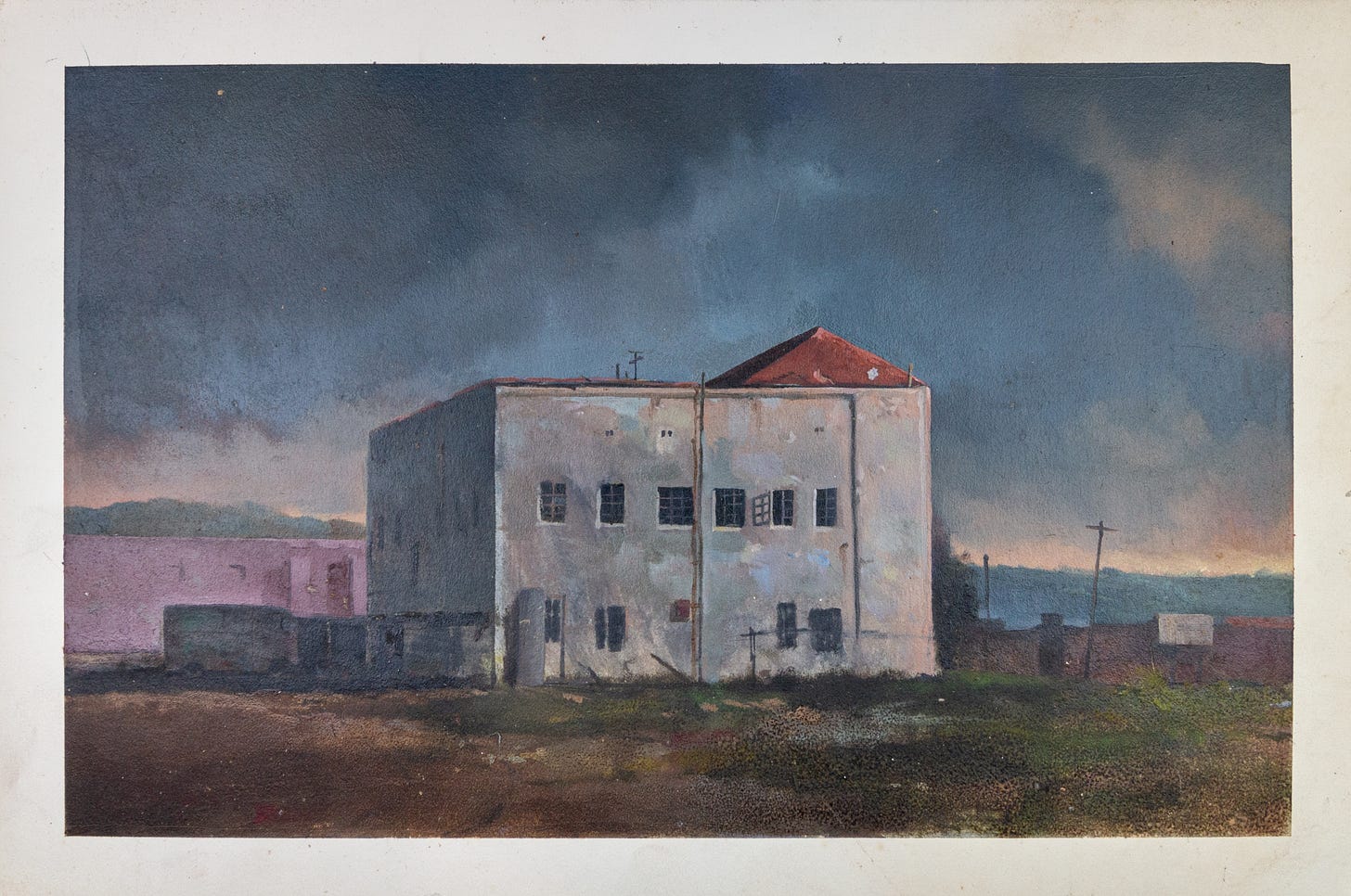Thomas Kinkade was a complicated artistic personality. Most people are familiar with the glowing cottages and the "Painter of Light" brand. But that was just one aspect of his art.
Before that stage, he was extremely experimental and had a weird sense of fantasy and cartooning.
I first met Kinkade long before he had his religious conversion and before he developed his company and his brand. I was assigned as his freshman roommate at UC Berkeley.
James Gurney, sketch of Tom Kinkade painting in our dorm room, UC Berkeley, June 1977.
We continued to be best friends for the next six years, living next door to each other in a cheap stucco Los Angeles apartment building filled with art students and other oddballs. We coauthored the book The Artist's Guide to Sketching, first published in 1982.
We also teamed up to paint all the backgrounds for the movie "Fire and Ice." Skip to 6:28 to see Tom explaining our technique.
Tom, or "W.T. Kinkade," as he was known then, absorbed influences from all around him, ranging from Andrew Wyeth's strange personal work to the outrageous, satirical comics of Mad Magazine and R. Crumb.
His mother subscribed to Time Magazine during the 1970s, and he cut off and saved all the painted portrait covers, which we used to wallpaper the ceiling of our dorm room.
Timber Bucker, sketched by Thomas Kinkade in a logging camp near Truckee
The painter who mentored him in his youth was Glenn Wessels, himself a student of the artist Hans Hofmann in Munich, Germany. Wessels taught color theory and abstract design at UC Berkeley. When I met Wessels, he expressed a disdain for the popular Golden Age illustrators of the early 20th century, such as Rockwell and Leyendecker. But Tom and I didn’t agree with that attitude.
Kinkade writing on The Artist’s Guide to Sketching
Many years later, Kinkade publicly dismissed modern art and the New York avant-garde, but he picked up on modern trends in his private and experimental work.
When he was at Berkeley he was fascinated by the idea of "monumentality," by which he meant elevating gritty urban elements like standalone buildings so that they stood out dramatically. If those paintings had sold better, his career might have taken a different turn.
Did Kinkade’s Art Have a Dark Side?
Keep reading with a 7-day free trial
Subscribe to Paint Here to keep reading this post and get 7 days of free access to the full post archives.


